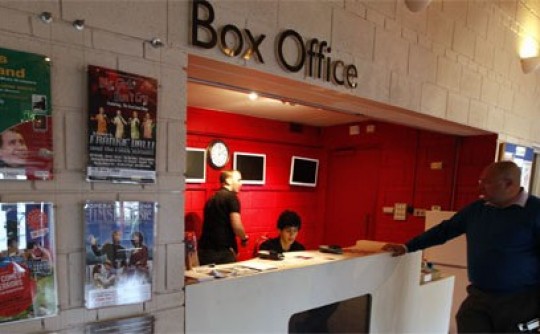Beyond Box Office - Taking CRM To The Next Level.
10 May 2012

So I’ve been thinking a bit more about CRM following on from my last blog and the many responses I received from it. Its clear that CRM advocates are passionate about its value and I don’t want to diminish that any way because CRM does work. Pound for pound you get a good return on investment and as such CRM is an extremely valuable sales tool.
But how deep is the loyalty it delivers?
I’d like to suggest that – and I realise this is a simplification - CRM creates largely transactional relationships through astute Box Office data management. Primarily focused on sales, its core aim is to manage customers with maximum efficiency, manipulating purchase behaviour through the provision of tailored benefits in return for money.
But let us consider the benefits of a more human approach to relationship management, Customer Experience Management (CEM).
CEM transcends the depersonalised nature of Box Office data and encourages organisations to think about and engage with people, real people. Now, don’t throw up your hands in horror. I know many of you regard CRM as highly personalised and tailored, and it is, to a degree. But how personal is ‘personal’? Would you, for example, judge the strength and health of your personal relationships purely on what you know about your friend’s habits, preferences and spending?
At the heart of any strong relationship is genuine, meaningful exchange that creates mutual value through the accumulation of positive, life-enriching experiences.
Our relationship with our audiences is no different.
What I’m not proposing is an alternative to CRM, simply an amplification of its principles, moving audiences beyond transactional buy-in towards becoming genuine adopters of your brand and in doing so, yielding much deeper loyalty.
The beauty of CEM is that it is predicated on a process of ‘strategic (mutual) value creation’. This enables arts organisations to exceed expectations, deliver peak experiences, address community needs, and connect with people in a meaningful way.
CEM enables you to understand, shape and manage the whole customer experience across all touch points and channels (marketing, ticket purchase, customer service, retail, audience engagement, access, environment etc) and in doing so fulfill you core mission to deliver genuine value to your audiences and communities.
The result is loyalty.
CRM is an important part of that system, creating a sales mechanism to harness this pre-existing loyalty through the provision of tangible benefits that add practical value to the customer relationship … but, without CRM that loyalty would still largely exist.
Here’s an encapsulation of the progression route from CRM to CEM (which for arguments sake could be referred to as CRM+). Take a look and think about how far along it you are now, and where you’d like to be.
|
CRM |
+ CEM |
|
Systems and transactions |
+ People and transactions |
|
Priority is the audience value to you (£s) |
+ Additional priority of your value to audience |
|
Business-led |
+ Customer-led |
|
Focus on sales channels |
+ Focus on whole customer relationship |
|
Managing sales |
+ Managing the quality of the customer experience |
|
Influence behaviour |
+ Shape attitudes that influence behaviour |
I hope this has provided a little food for thought. If anyone is interested in exploring CEM further, or is already doing it, I’d love to talk with you to learn and share.